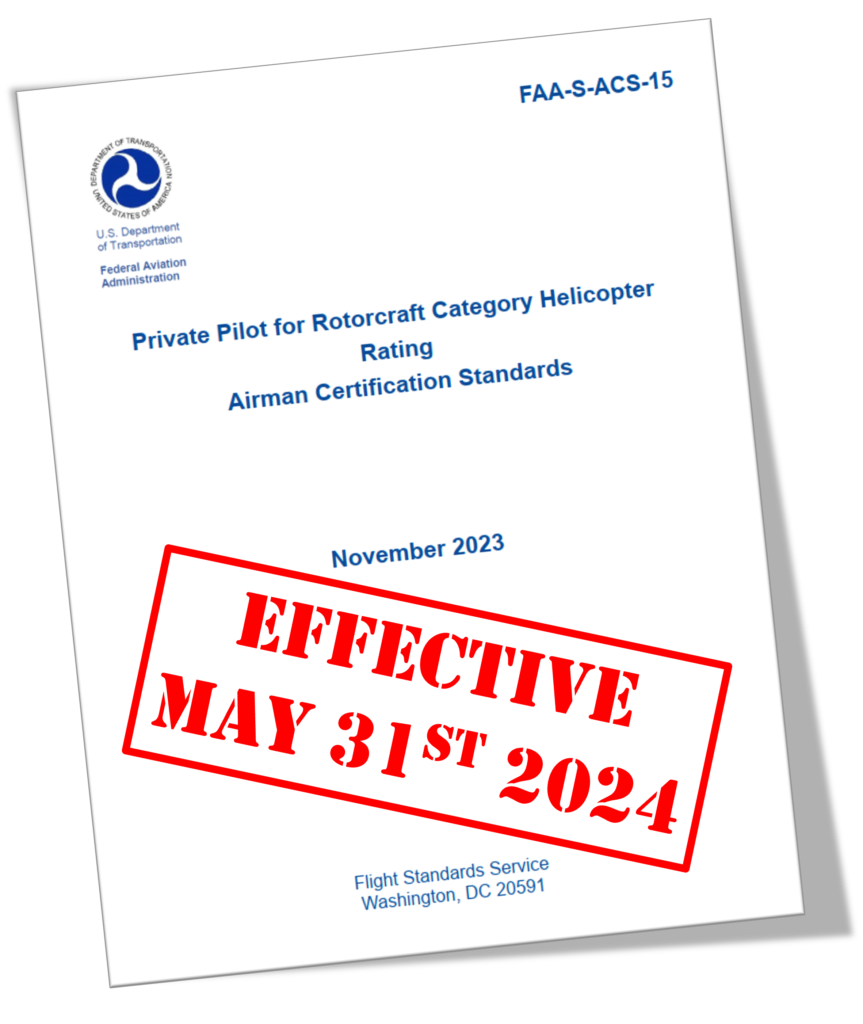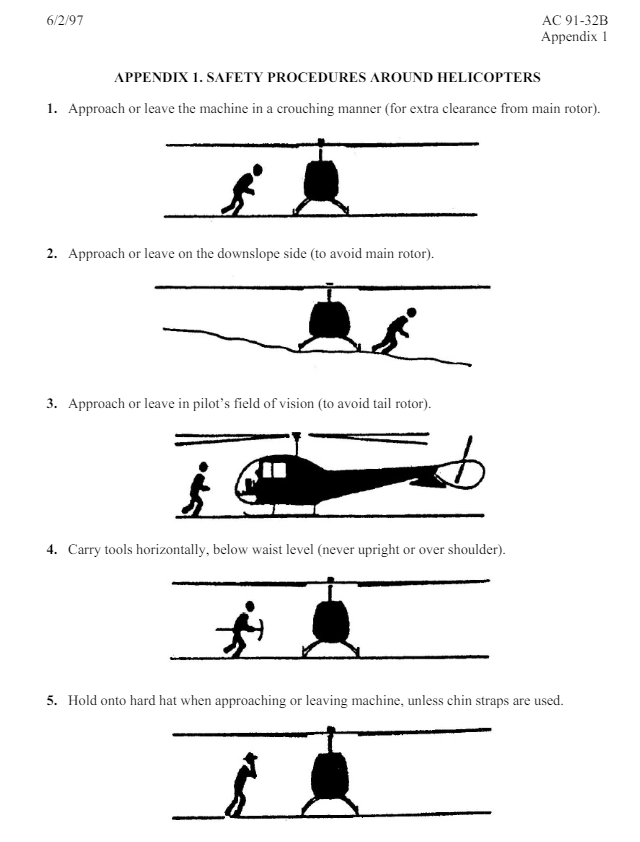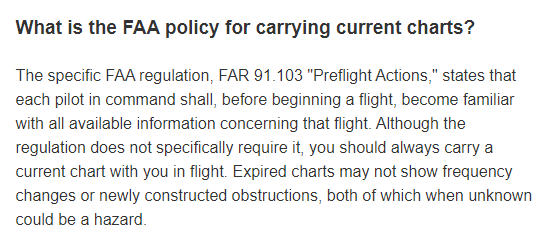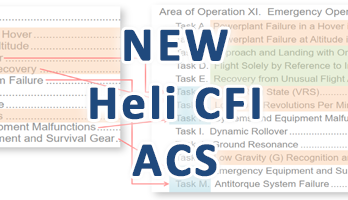Effective May 31st, 2024 the FAA Helicopter Private PTS (along with Commercial, Instrument & CFI) was replaced by the new FAA Helicopter Private Pilot ACS (Airman Certification Standards).
Before taking the knowledge test or practical exam (checkride) you should be looking through every element in every applicable task and ask yourself “Am I confident about this?” And if the answer is “No“, use your instructor and the task references to help you learn/practice what the FAA wants you to know, consider & do to pass the exams. Below are just some of the key differences from the PTS for each task in the new Helicopter Private Pilot ACS , II. Preflight Procedures Area of Operation (AOO).
Previous ACS Articles and Videos
If you haven’t already, check out the previous ACS articles and videos in this series:
Helicopter Flight Instructor (CFI) ACS – The BIG Changes
Helicopter Instrument ACS – The BIG Changes
Helicopter Commercial Pilot ACS – The BIG Changes
Helicopter Private Pilot ACS – Changes to Preflight Preparation Tasks
Helicopter Private Pilot ACS – The BIG Changes
New (2024) Helicopter ACS Finally Here!
General ACS Changes
If the ACS is completely new to you, before reading the specific changes below check out our ACS overview article and ACS overview video covering the new ACS code system, task structure, required elements, changes to special emphasis areas, risk management and more.
Follow Along
If you want to follow along with the changes, grab the free PDF from the FAA’s ACS webpage or purchase the paper version (Amazon affiliate links used on this webpage to help support HTV) below. Paper versions also come with the ACS Companion Guide for Pilots (FAA-G-ACS-2).
Helicopter ACS Private Pilot Part 3, AOO II, Preflight Preparation Video
Preflight Preparation AOO II
All tasks in Preflight Preparation (Area of Operation II) are required tasks for the Helicopter Private Pilot Checkride. See below for details of each task.
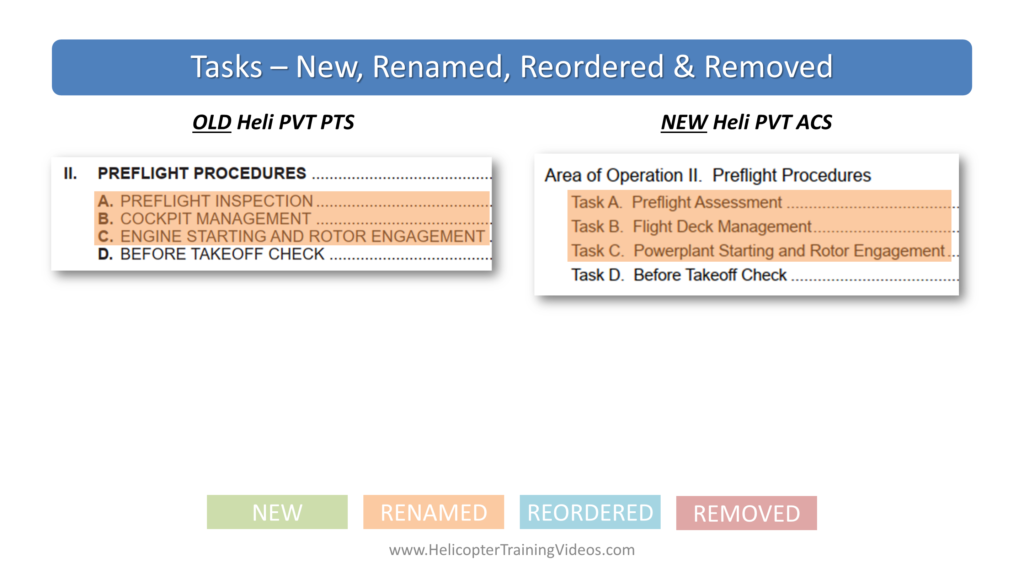
Task A – Preflight Procedures
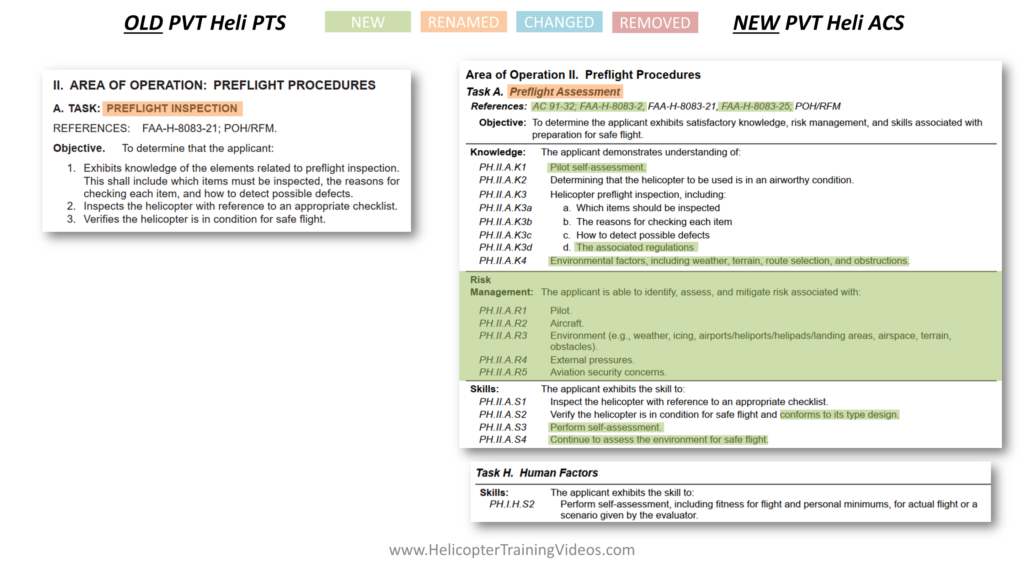
The Preflight Inspection task was renamed Preflight Assessment to include the PAVE risk assessment (Pilot, Aircraft, EnVironment & External Pressures).
References
Due to the new Risk Management section of ACS tasks, all tasks will now have a reference to the FAA Risk Management Handbook 8083-2. Also the Pilot Handbook of Aeronautical Knowledge (PHAK) 8083-25 was added. Check out PHAK chapters 2, 9 and 17 and Helicopter Flying Handbook (HFH) chapter 8.
Also a new FAA Advisory Circular (AC) was added to references – AC 91-32 (Safety in & Around Helicopters). This is a great resource, but is better suited to Task B (Flight Deck Management) which has elements referring to passenger briefings.
Knowledge
Pilot self-assessment has been added – the Illness, Medication, Stress, Alcohol, Fatigue & Emotion/Eating/Everything Else (IMSAFE).
Most of the aircraft preflight elements are the same, except a new mention of the “‘associated regulations‘” – most likely referring to:
- §91.7 Aircraft airworthiness – No person may operate a civil aircraft unless it is in an airworthy condition.
- §91.205 Equipment requirements.
- §91.213 Inoperative instruments and equipment.
Also included as a reference for this element would be the aircraft POH/RFM required equipment lists & kinds of operation limits:
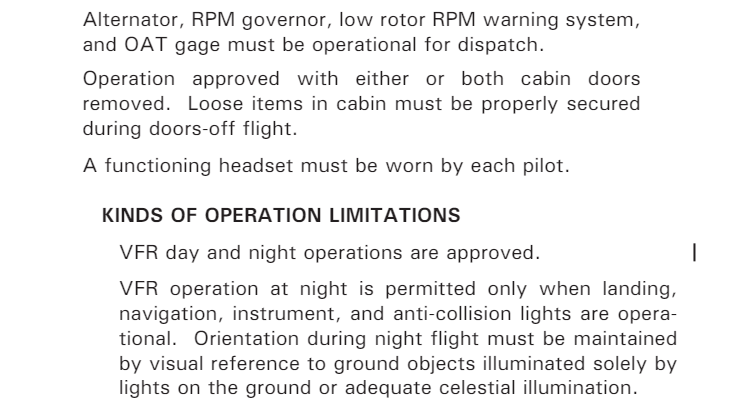
And finally, still worth a look is the cancelled AC 91-67 which covers how to deal with inoperative equipment:
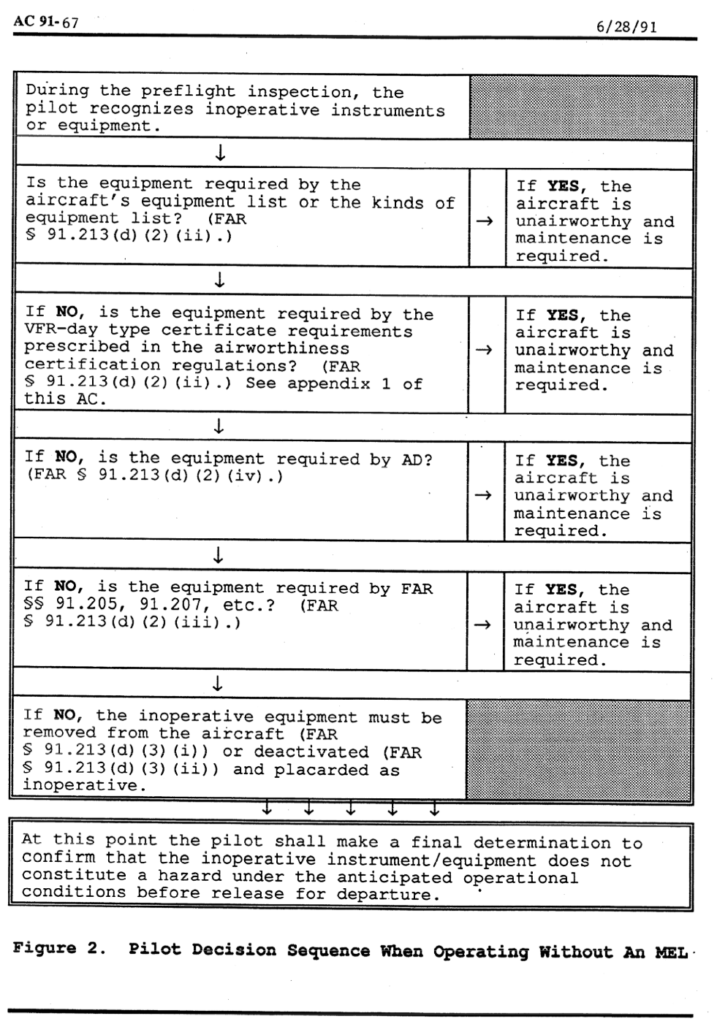
There is also a new element referring to the environmental factors, including weather, terrain, route selection and obstructions. This is really already covered in detail in the Cross-Country Flight Planning task in the previous Area of Operation (AOO I – Preflight Preparation).
Risk Management
Again there is some cross over from elements in the Cross-Country Flight Planning task in the previous Area of Operation (AOO I – Preflight Preparation) in the form of PAVE risk assessment & mitigation. These are also things you might cover in a Flight Risk Analysis Tool (FRAT). If you have a FRAT tool at your flight school, fill one out and bring it to the checkride.
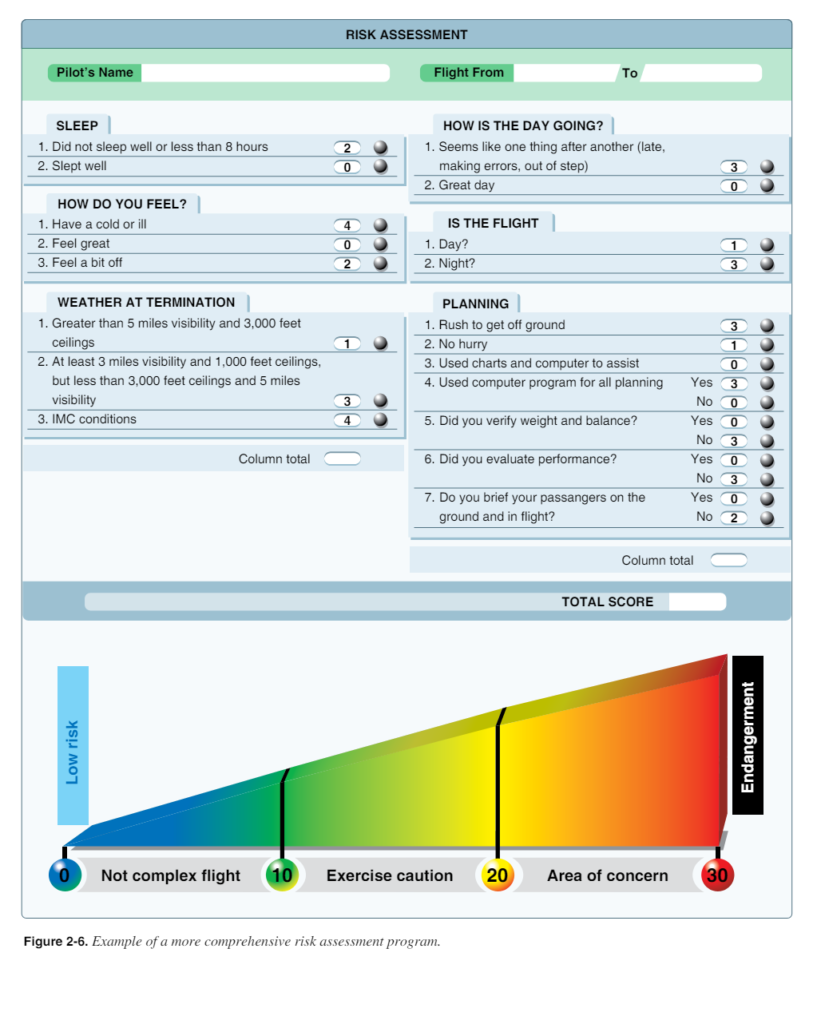
There is also a new element – “Aviation Security Concerns”. I have searched “security” in all the named references and I can not find anything. Your best resource for aviation security would be to check out the free AOPA General Aviation TSA Security Awareness course.
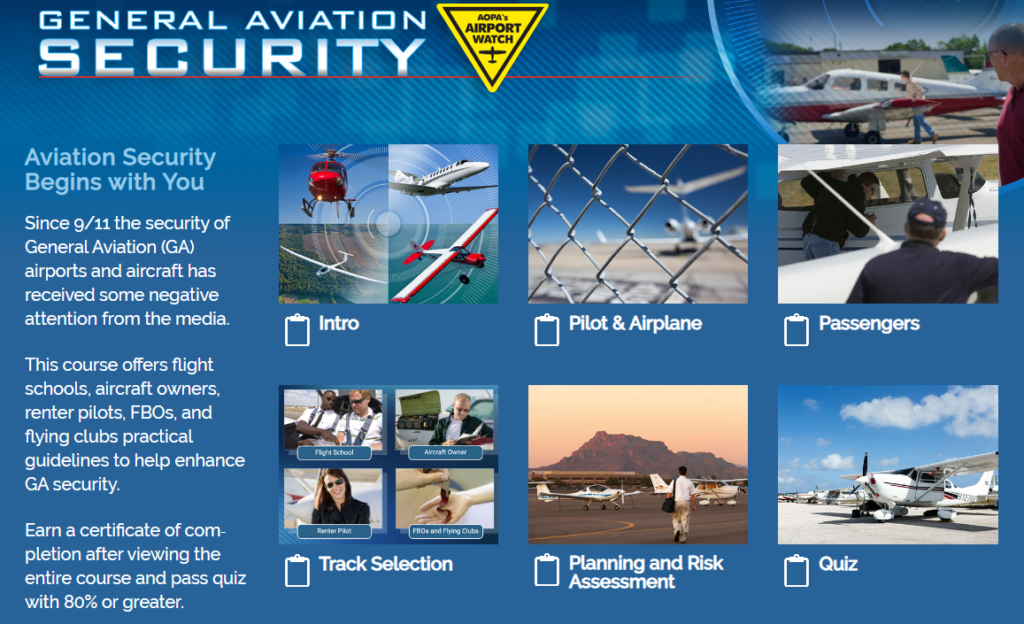
Skills
Under skills there are three new elements:
- “Conform to its type design” = Making sure the aircraft paperwork shows the aircraft is airworthy and all required inspections and ADs have been complied with.
- Perform a self assessment (IMSAFE).
- Continue to assess the weather etc. and discontinue the checkride if conditions become unsafe.
Task B – Flight Deck Management
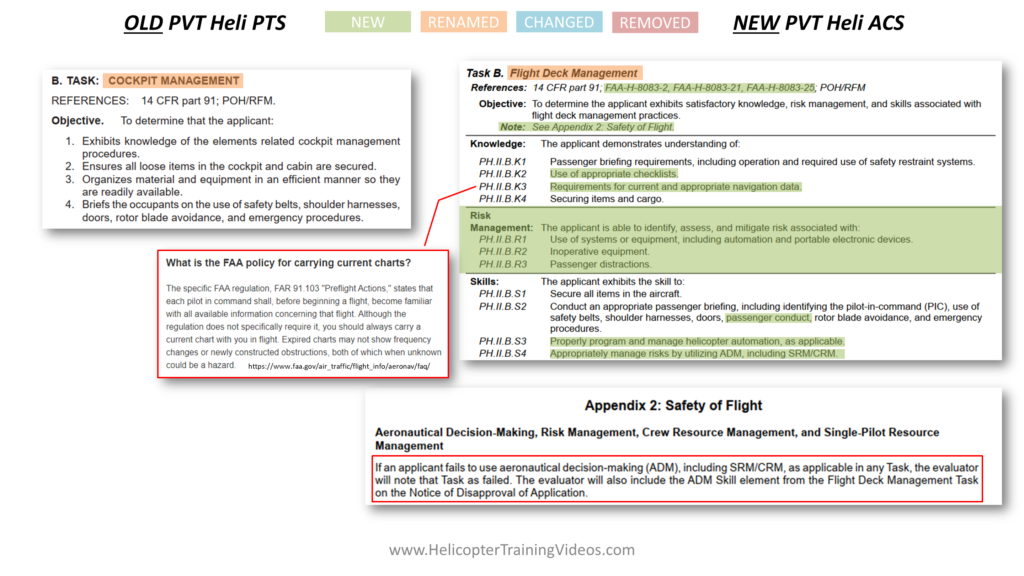
References
New references include FAA Risk Management Handbook 8083-2 (multiple chapters apply), the Pilot Handbook of Aeronautical Knowledge (PHAK) 8083-25 (chapter 2) and the Helicopter Flying Handbook 8083-21 (HFH) chapter 8.
Some other references to check out – Robinson Safety Notice 30 – Loose Objects can be Fatal and the AC 91-32 (Safety in & Around Helicopters) covered in the previous task.
Note
The note to Appendix 2 says if the applicant fails to use ADM SRM/CRM on any task, that task will will be unsatisfactory and the applicant will also get a Flight Deck Management unsatisfactory task too – bonus fail!
Knowledge
Under knowledge we have a element referring to use of checklists – previously checklist usage was a special emphasis item, now checklist usage is spread throughout the relevant tasks.
There is also an element covering requirements for current and appropriate navigation data. The FAA has an FAQ on navigation charts and states the following:
Risk Management
The risk management section covers the risks associated with use of automation and portable electronic devices (iPads with ForeFlight etc.), inoperative equipment (iPad overheat, etc.) and passenger distractions (talking too much, air sick, touching controls, etc.)
Skills
The skills section has new items including passenger brefing to cover passenger conduct (sterile cockpit, don’t grab the rotor brake, etc.) Also program & manage automation (GPS/PFD/MFD, etc. ) and use ADM, SRM/CRM – brief evaluator to be used as a resource as if they were a passenger.
Task C – Powerplant Starting & Rotor Engagement
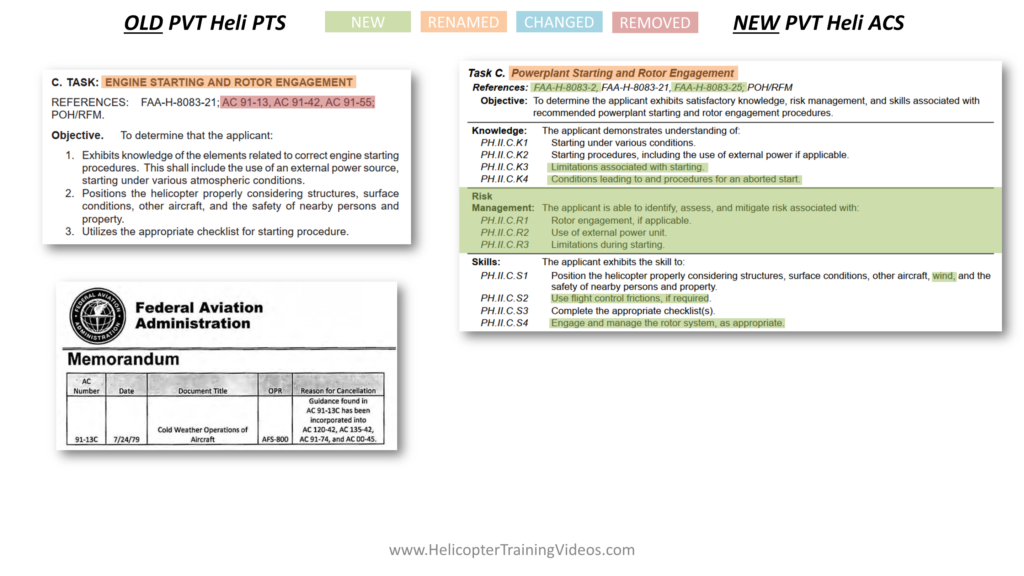
Task C was renamed from “Engine Starting” to “Powerplant Starting” – probably to future-proof changes in propulsion to electric motors, etc.
References
The ACS removed a bunch of Advisory Circulars (ACs) for this task:
- Removed AC 91-13 Cold Weather Operation of Aircraft – this cancelled AC was incorporated into the following ACs:
- AC 91-74 Pilot Guide in Icing Conditions – not listed as a reference for this task
- AC 00-45 Weather Services – which is also now cancelled and content is in the new Aviation Weather Handbook, not listed as a reference for this task
- AC 91-13 is still a good reference to read & I can’t find a direct replacement covering the same content – (cold weather engine starts, preflight items, survival gear, etc.)
- Removed AC 91-42 Hazards of Propellors & Helicopter Blades (cancelled) – now covered in Helicopter Flying Handbook Chapter 8
- Removed AC 91-55 – Electrical System Failures following Engine Starts (not sure why they took that out as not cancelled)
New references were the usual Risk Management Handbook and the PHAK.
Knowledge
A couple of new elements added – Limitations associated with starting and Conditions leading to and procedures for an aborted start. Those items would be covered in your aircraft startup checklist – checking oil pressure, blades turning, maybe temperature limits, etc.
Risk Management
A few new risk management elements to consider, including the use of external power (safety of ground crew, etc.) and limitations on startup.
Skills
Most of the skills for this task involve following the startup checklist. But new elements include use of flight control frictions and engaging the rotor system. Just follow the checklist… And also position the aircraft for startup with consideration for wind.
Task D – Before Takeoff Check
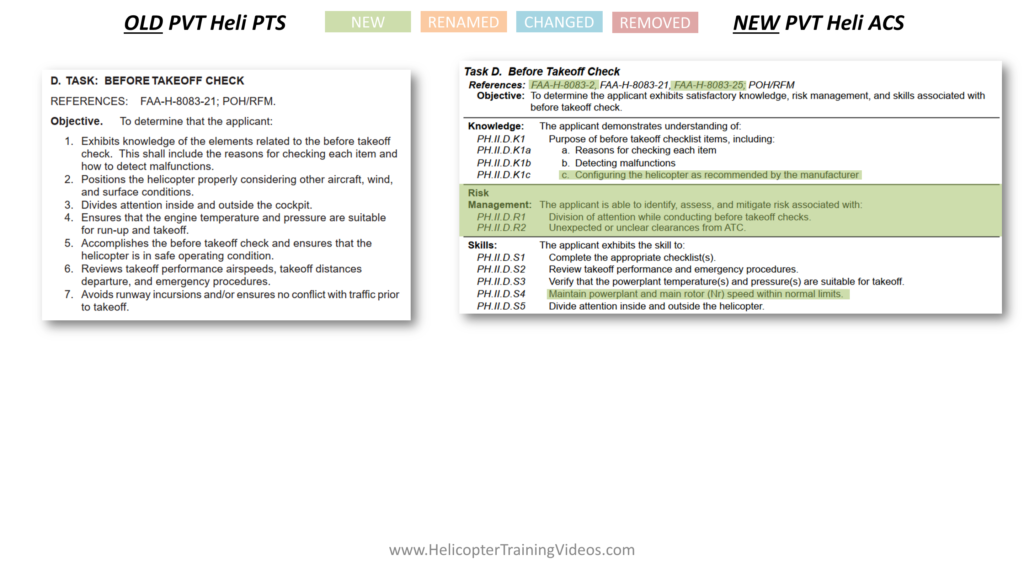
References
New references were the usual Risk Management Handbook and the PHAK. Also check out the Helicopter Flying Handbook Chapter 9.
Knowledge
Not much changed except an element about configuring the helicopter as recommended by the manufacturer. I am not really sure what that refers to, maybe use of carb heat or lights?
Risk Management
Making sure the aircraft is safely under control or on the ground while doing pre takeoff checks and then making sure ATC instructions are fully understood (no runway incursions etc.)
Skills
Mostly the same as the old PTS, but with a new element about maintaining RPM within normal limits – pre take off checks should confirm that.
More Info
The next article/video will dig deep in to AOO III. Airport and Heliport Operations, covering every task and show the specific element changes. Until then, to learn more about the changes from Helicopter PTS to ACS and some of the references mentioned in this article, check out the following:
- Helicopter ACS General Changes Video and article
- Helicopter ACS Private Pilot, Part 1 – Big Changes Video and article
- Helicopter ACS Private Pilot, Part 2 – AOO I – Preflight Preparation Video and article
- Helicopter ACS Playlist (Full Details for PVT, COM, INST & CFI Changes)
- FAA Airmen Certification Standards
- AC 91-67 (MEL & INOP Equipment)
- AC 91-32 (Safety in & Around Helicopters)
- AOPA TSA Security Awareness Course
- Robinson SN-30 (Loose Objects Can Be Fatal)
- AC 91-13 (Cold Weather Operation of Aircraft)
- “That Will Kill Us” video
- FAA FAQ on Current Charts
If you want to purchase the paper versions below are Amazon affiliate links that help support HTV. Paper versions also come with the ACS Companion Guide for Pilots (FAA-G-ACS-2).
DISCLAIMER – make sure you are fully informed on the latest regulations and their application.
For official guidance on laws and regulations, refer to your Certified Flight Instructor (CFI) or local Flight Standards District Office (FSDO) . Helicopter Training Videos aims to promote aviation knowledge and safety but makes no guarantees regarding accuracy or legal applications.
Feedback
What changes to the Helicopter Private Pilot ACS have you seen? Let us know using the comments form below:










